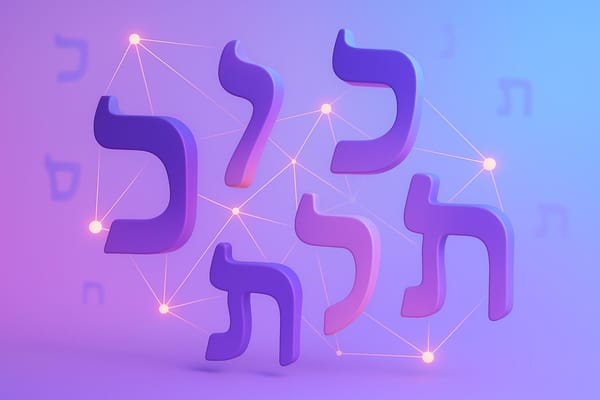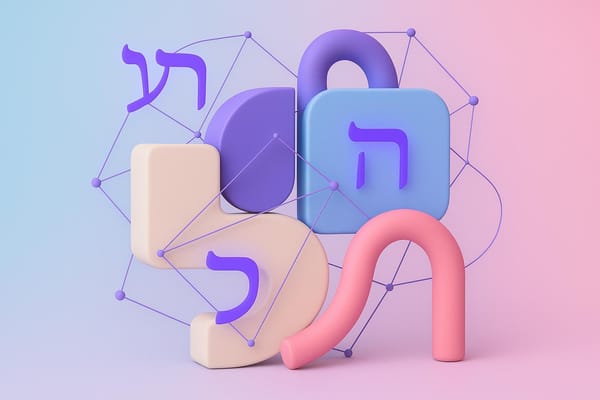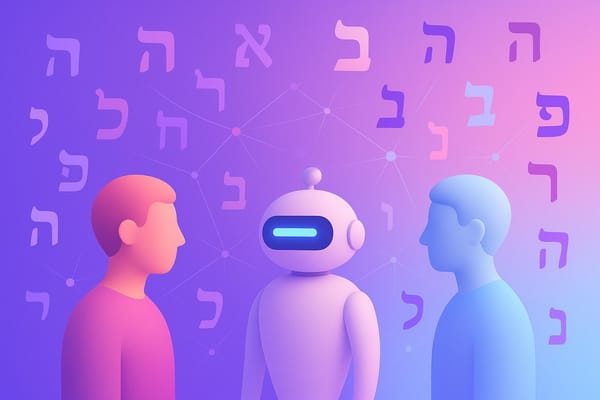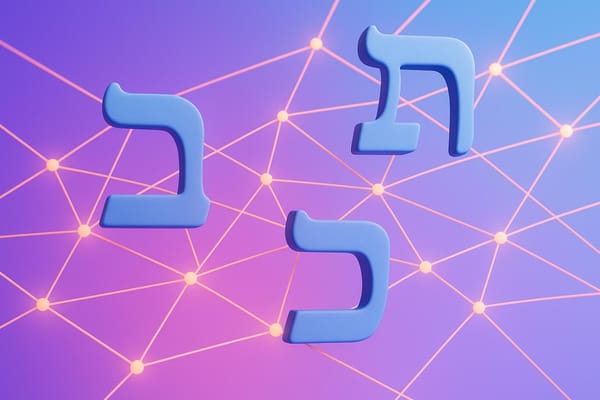Reducing Errors in Hebrew AI Translation
Explore the challenges of Hebrew AI translation, including gender errors, word order issues, and idioms, and learn how to improve accuracy.

Hebrew AI translation is tough. Why? The language's unique grammar, gender rules, and idioms often confuse AI systems, leading to errors. Here's what you need to know:
-
Key Issues in Hebrew AI Translation:
- Gender and Number Errors: Hebrew requires nouns, verbs, and adjectives to match in gender and number (e.g., "אני שמח" vs. "אני שמחה").
- Word Order Problems: Hebrew's flexible sentence structure can confuse AI, leading to awkward or incorrect translations.
- Idioms Misinterpreted: Hebrew idioms like "על הפנים" (literally "on the face", meaning "terrible") often lose their meaning in translation.
- Why It Matters: Poor translations can harm business deals, legal documents, or even everyday communication. They can also damage trust and reputation.
-
How to Fix It:
- Better AI Models: Advanced systems analyze grammar and context more effectively.
- Native Speaker Input: Human experts help catch errors and refine translations.
- Specialized Tools: Tools like baba - Smart Hebrew Translation address Hebrew's unique challenges, such as gender detection and idiomatic expressions.
Takeaway: Hebrew AI translation requires a mix of advanced technology and human expertise to reduce errors and ensure accuracy.
How To Use ChatGPT As A Hebrew Translator
Main Translation Errors
When it comes to translating Hebrew, AI tools often stumble due to the language's unique structure and the complexity of interpreting it accurately. These challenges lead to some major translation mistakes.
Gender and Number Mistakes
Hebrew's grammar requires that every noun, verb, and adjective match in both gender and number. This makes translation tricky for AI systems. For example, translating "I am happy" depends on the speaker’s gender, requiring either "אני שמח" (ani sameach, masculine) or "אני שמחה" (ani smecha, feminine).
Common missteps include:
- Adjectives that don’t match the gender or number of their corresponding nouns
- Incorrect verb forms based on the subject's gender
- Misalignment of gender-neutral terms with Hebrew's strict gender rules
These errors can distort the meaning of even simple sentences.
Word Order Problems
Hebrew allows for a flexible sentence structure, unlike English's more rigid Subject-Verb-Object format. While this flexibility feels natural to native speakers, it often confuses AI systems, which are usually trained with English as a base.
Typical issues include:
- Misplacing adjectives in relation to the nouns they describe
- Errors in possessive phrases (known as סמיכות, smichut)
- Misunderstanding emphasis created by varying word order
These structural misinterpretations can make sentences sound awkward or change their meaning entirely.
Idiom Translation Errors
Hebrew idioms are another major stumbling block for AI. Idioms carry meanings that go far beyond their literal translations, and this cultural nuance is often lost. For instance, the phrase "על הפנים" (al ha-panim) literally means "on the face", but in context, it conveys "terrible" or "very bad."
When idioms are mistranslated, the results can include:
- Loss of cultural significance
- Confusion in professional or business communication
- Misinterpretations in formal documents
Such errors can seriously impact the clarity and intent of a translation, especially in settings where precision is non-negotiable. The real challenge lies in capturing the meaning behind the words, not just their direct translation.
Ways to Reduce Translation Errors
There are several effective methods for minimizing common Hebrew translation mistakes.
Enhancing AI Models
Modern AI translation systems utilize neural networks designed to understand Hebrew grammar, analyze sentence context, and handle gender-specific language. These advancements improve accuracy, though no algorithm can fully grasp every subtlety of the language.
Leveraging Native Speaker Expertise
Involving native Hebrew speakers in the translation process is crucial for maintaining accuracy. Professional translators and language experts can spot nuanced errors, interpret cultural subtleties, and provide feedback to improve AI systems. When paired with specialized tools, their input can significantly boost translation quality.
Using Tools Like baba - Smart Hebrew Translation

Specialized tools such as baba - Smart Hebrew Translation tackle specific challenges like gender detection and cultural context. baba adapts dynamically in real-time, ensuring precise translations that respect cultural and linguistic nuances.
This tool is ideal for a variety of settings, from professional business communication to casual conversations. Its ability to consider both the speaker and the audience helps reduce common grammatical and gender-related errors, making your Hebrew translations more accurate and natural.
Professional users looking for dependable Hebrew translations can rely on tools like baba, which are designed to address the unique complexities of the language.
Join the waitlist for the baba mobile app at www.itsbaba.com.
Measuring Translation Success
Evaluating Hebrew AI translation quality involves a mix of automated tools and human analysis.
Methods for Assessing Quality
Metrics like the BLEU score are often used to compare AI translations to human references. However, Hebrew's grammar and cultural nuances require a deeper approach to ensure accuracy.
Here are some additional methods:
- Grammatical Accuracy Rate: Measures how well translations follow Hebrew grammar rules, such as gender agreement and verb conjugation.
- Context Preservation Score: Assesses how well the translation retains the original meaning and cultural context.
- Technical Term Accuracy: Tracks how precisely industry-specific terms are translated.
These methods help set a solid baseline for refining translations through user feedback.
Leveraging User Feedback
Numbers alone aren't enough - feedback from real users plays a key role in improving translation systems. Common feedback strategies include:
- Real-time correction tools: Allow users to suggest better translations instantly.
- Quality audits by native speakers: Help identify frequent errors and areas for improvement.
- A/B testing: Compares different translation methods to find the most natural results.
To gauge the effectiveness of feedback systems, focus on factors like how quickly responses are processed, the volume of input received, and how often suggested changes are implemented. A good system prioritizes critical fixes and ensures user suggestions are acted on promptly.
Next Steps in Hebrew AI Translation
Building on earlier advancements and quality improvements, the focus now shifts to what lies ahead.
Main Points
Enhancing Hebrew AI translation requires a combination of cutting-edge AI technology and skilled human expertise. Tools such as baba - Smart Hebrew Translation tackle Hebrew's unique complexities, like ensuring gender accuracy and understanding context, setting high benchmarks for translation quality. These steps lay the groundwork for upcoming developments in the field.
Future Improvements
Building on current progress, the next generation of translation tools will target three main areas:
- Context Recognition: Refining AI models to better understand broad contexts, cultural nuances, and regional dialects.
- Real-time Learning: Incorporating live feedback, adaptive learning techniques, and continuously updated vocabularies.
- Cultural Integration: Improving the handling of Hebrew idioms, cultural references, and varying levels of formality.
Future updates to tools like baba - Smart Hebrew Translation aim to integrate these advancements, narrowing the gap between automated translations and authentic Hebrew communication.





